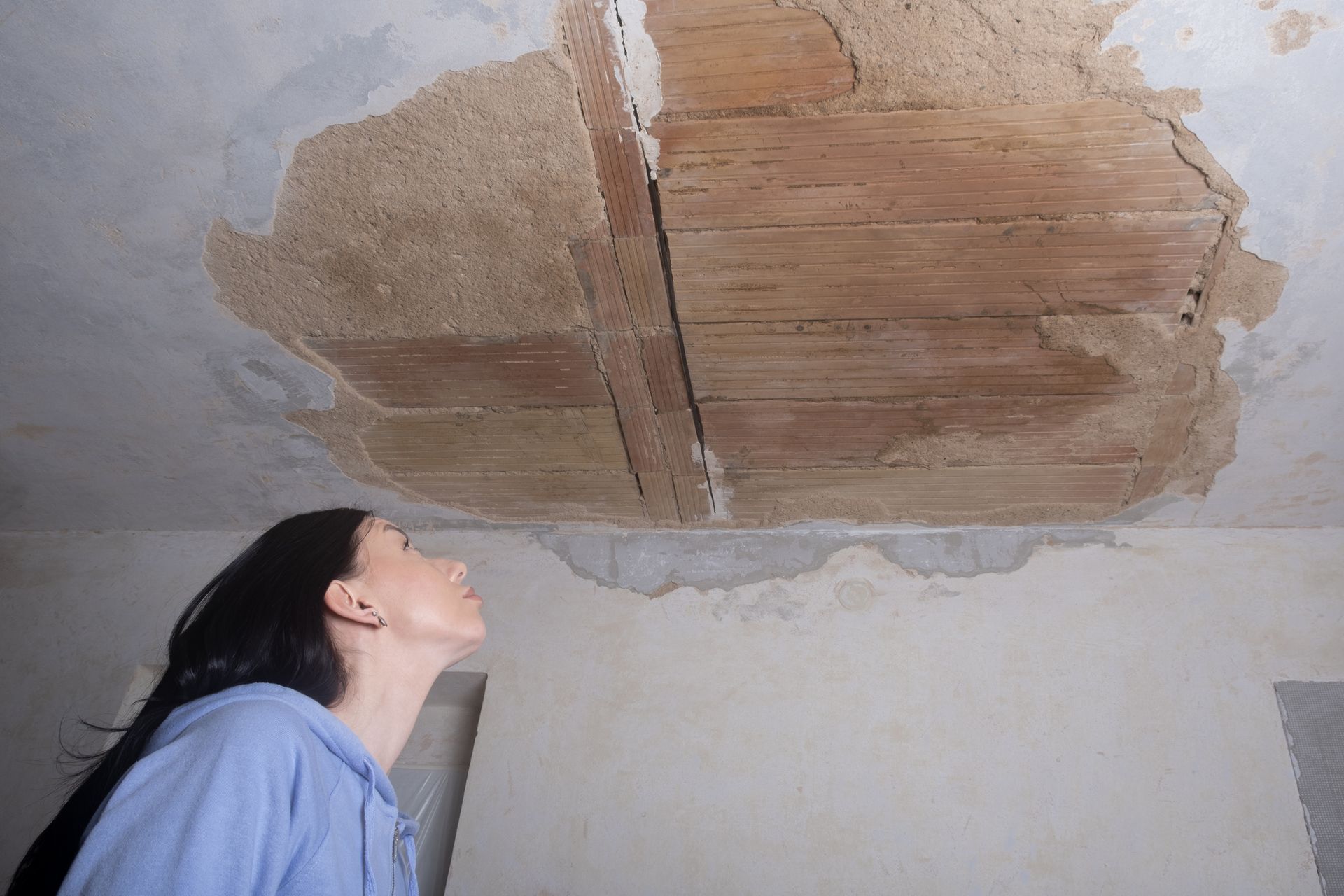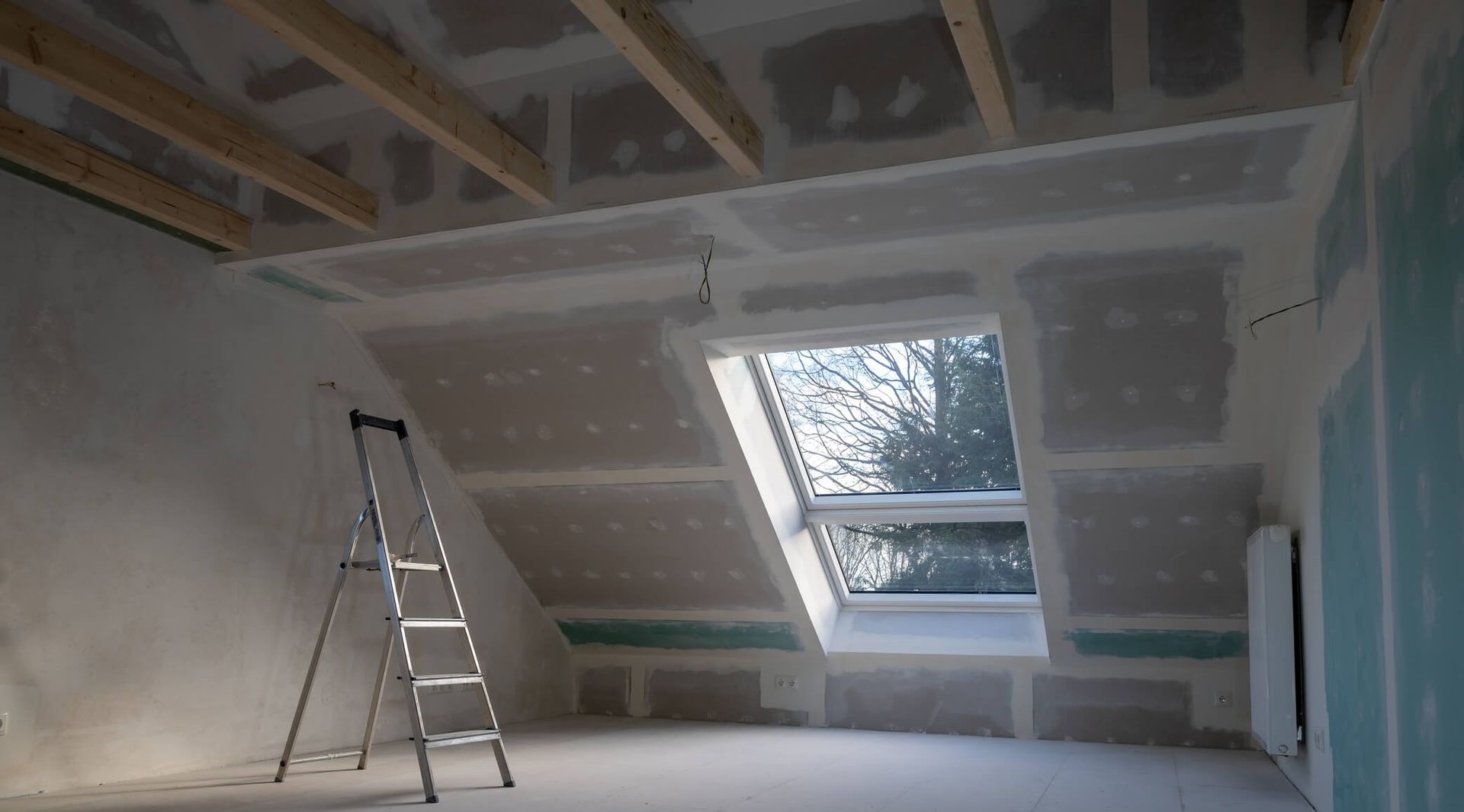Lakewood Ceiling Repair

Most homeowners try to ignore ceiling problems as much as they can since they dread having them repaired. If you’re one of these people, you may want to reconsider that option.
A ceiling repair service doesn’t have to be overwhelming for you, as long as you hire the right people for the job. Regardless of the ceiling damage type that you’re experiencing, our team at Lakewood Drywall Squad is here to help you.
We’re experts on all things drywall, and we understand how ugly ceiling problems can get. Keep reading or give us a call if you want to know everything about our ceiling repair contractors and what they can do for you!
What Can Go Wrong With Your Ceilings?
Many things can warrant a drywall ceiling repair service, such as:
- Cracks in ceiling (drywall)
- Water damage
- Holes in ceiling (drywall)
- Uneven surfaces
- Asbestos and mold
In some cases, patching your ceiling with drywall could be an effective solution. However, severe problems, such as the accumulation of asbestos, mold, water damage or huge holes in your ceiling, may require replacing your ceiling with drywall.
It’s critical that you don’t let any of these problems worsen over time. The longer you wait to request your plaster ceiling repair, the more expensive it can be. If you’re looking to repair your drywall ceiling, don’t hesitate to ask us for a free consultation of our services!
Textured Ceiling Repair
Textured ceilings were fairly common years ago. Textures like popcorn, stipple, stucco, and cottage cheese were some of the best options for your home back in the day. However, repairing a stipple ceiling has proven to be extremely complicated, and if you don’t take care of it, your ceiling could accumulate asbestos, which isn’t good.
Moreover, textured ceilings are more prone to cracks, so make sure you request a ceiling crack repair service as soon as you notice these. We can either remove the texture to smooth the surface out or we can help you get the texture back to its days of glory. On the other hand, in case you need a popcorn ceiling repair, you may talk to us to assess your options. For example if you have popcorn ceiling water damage and want to keep your texture over time, you must repair popcorn ceiling water damage as soon as possible.
Ceiling Water Damage Repair
A “water damage” ceiling is one of the most common problems homeowners experience. Moreover, if you have a textured ceiling, you must request a stucco ceiling repair or a stipple ceiling repair before it’s too late. Generally speaking, water damage can lead to insulation problems, water patches, pests, and more.
Repairing water-damaged drywall isn’t easy, so make sure to talk to our team to see what our wet ceiling repair service can do for you.
How Much Will Your Repair Service Cost?
Your drywall ceiling repair cost will depend on several factors. Overall, a ceiling repair (water damage) cost will not be the same as a full ceiling replacement cost or a drop ceiling repair cost.
Some of the factors that affect the cost include:
- Project type
- Professional fees
- Type of texture
- The severity of the damage
- Materials used
If you need a bathroom ceiling repair or a popcorn ceiling crack repair, don’t hesitate to contact our team to know more about what we can do for you.
Ceiling Repair FAQ's
Our Frequently Asked Questions
Contact Us for Your Free Ceiling Repair Quote Today!
Whether you want to repair your drywall ceiling or request a special service like a knockdown ceiling repair service, Lakewood Drywall Squad is here for you. Stop looking for “ceiling repair near me” and start your dream project by calling one of our drywall contractors or filling out our contact form!




